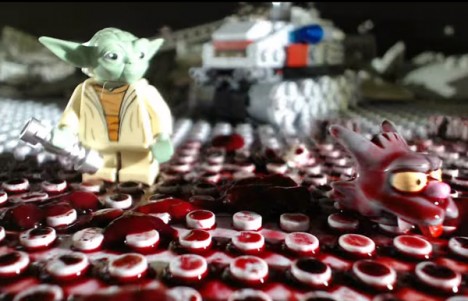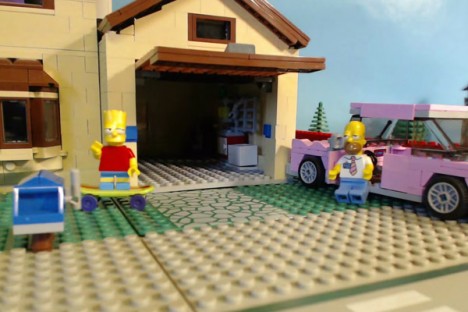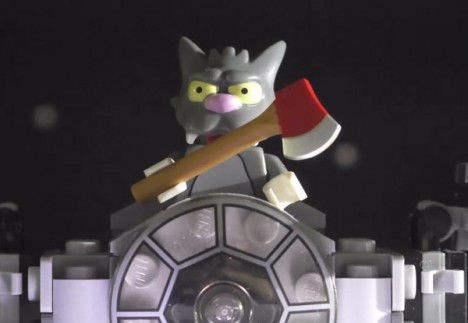 |
| Sigma CEO Kazuto Yamaki, pictured at the CP+ show in Yokohama, Japan. |
Last month at the CP+ show in Yokohama we spoke to executives from several major manufacturers, including Sigma. In our conversation with CEO Kazuto Yamaki we discussed his plans for future L-mount lenses (and cameras) and some of the challenges of supporting multiple mounts.
It’s been six months since the L-mount alliance was announced. How’s it going?
At CP+ our main theme is to show our commitment to the L-mount system. We didn’t bring [out] any totally, brand-new products at CP+ but we showed our commitment to L-mount system by showing our new mount adapter and prime lenses for the system.
The response is better than I thought, initially. Not only from retailers and distributors, but also users who have showed very strong interest in L-mount system. Potential customers are very positive, which is more than I expected: it’s a nice surprise.
You expected it to be harder to convince people?
Yes, because it’s a relatively new system. It’s not a brand-new system, because Leica already had their own system, but as an alliance, this is only the beginning. Panasonic just announced a few products, so compared to the existing systems, particularly compared to Sony system, it’s not [comprehensive]. I was pretty surprised customers showed interest in our system.
 |
| The Sigma 35mm F1.4 Art for L-mount is a new lens, but the optical design was laid down at the launch of the Global Vision lens series, in 2012. |
Do you have plans to design native L-mount lenses?
We will probably release a few lenses this year, designed for the short flange-back distance.
What are the most important lenses the L system will need in order to be a success?
First of all we need to have more and more lenses. Variety is key. Regardless of whether it’s standard zoom lens, telephoto lens or primes, we need to have more lenses because professional photographers and enthusiasts want to try many lenses. [They don’t] have to be standard or unique, the first priority is to have more. That’s why we announced eleven lenses at CP+, all of which will be available this year.
It might also be a good idea to have unique lenses that only L-mount users can enjoy: we’ll need to think about this.
L-mount lenses from Panasonic and Leica are all fairly expensive, compared to typical Sigma pricing – should we expect your L-mount lenses to be more affordable?
We believe our mission is to provide high quality products with affordable prices. Although I have said we can’t be the cheapest product supplier, we do our best to provide the highest quality product with an affordable price.
Actually the production cost is very high but we minimize the organization, we maintain a very lean organization: we have very few employees in marketing, sales, administration or HR so we can provide products at an affordable price. Our goal isn’t to increase the price more than necessary.
DFD information part of the L-mount standard: will you be writing this information into your L-mount lenses?
I just can’t comment. It’s great technology but I’m not sure we can implement it in our camera because it requires a lot of processing power. We respect the technology but we cannot comment [on] whether we’ll implement in our cameras.
 |
| Ahead of the development of brand new lenses designed from the ground up for mirrorless, Sigma has created two MC-21 adapters to convert its Sigma SA and Canon EF lenses to the L-mount. |
What about your lenses?
Yes, that’s why Panasonic, Sigma and Leica engineers [are working] together to enhance the L-mount system. We keep upgrading the L-mount system for much more communication between the lens and body to support technologies like DFD.
Sigma arguably started the trend of big, heavy, very sharp primes but now everybody is doing it. Can Sigma create a new segment?
I must admit our position in the industry: people [regard us as] a third-party or accessory provider. Many customers may wish to choose their original manufacturers’ lenses. So, as a lens manufacturer, differentiation is important for us. We always try to bring a unique lens that the body manufacturer doesn’t have.
A long time ago we produced similar lenses with much, much cheaper prices. But today we produce everything in Japan, including parts, so we can’t be the cheapest product supplier. The only way to survive in the industry is to produce unique products. I think big, heavy but super performance was one of the strategies to differentiate ourselves. But today many companies have similar products so perhaps we need to find another [strategy].
The Art series is our heart and we have many users all over the world, so we’ll maintain this lineup
Of course the Art series is our heart and we have many users all over the world, so we’ll maintain this lineup. In order to differentiate ourselves we’ll need to create new ideas for lenses and we’re currently working on it.
I can’t tell you [more] now. Maybe after several glasses of sake!
Is there room in the range for smaller, maybe F2 primes?
The advantage of mirrorless cameras is the small factor. I’m aware some users want very lightweight, small camera bodies and small lenses. They might want to use the big, heavy lenses for some occasions, but for casual shooting, like street photography, they might wish for smaller lenses. I can’t comment but maybe in the future we may be able to deliver such products.
With so many new camera systems on the market now, how do you prioritize which mounts you develop lenses for?
I have a great interest in the Canon R and Nikon Z systems because eventually they will have more and more customers. So we are now investigating these systems. But still it’s too early to make a statement about how we will respond.
Right now we see many new Canon R and Nikon Z users using mount adapters with their existing lenses. So we’re concentrating on optimizing the compatibility of our lenses with their mount adapters and cameras.
We’ve already made sure that our lenses work almost perfectly, without any problem, but we’re looking in detail: maybe there are some minor issues with this specific setting, or with that specific procedure, and so on, so you may still see some minor issues. Our software engineers are now de-bugging those kind of things. But, at the same time, we are looking into how to support the new systems.
 |
| Nikon’s wide, shallow mount provides some advantages for optical engineers, but according to Mr Yamaki it’s easier for a third-party manufacturer to design solutions for narrower standards first, and adapt them outwards. |
How difficult is it to create one lens design which has to work for several different mirrorless mounts, with their different dimensions?
We have the same challenge in the case of DSLR. The Canon EF mount has larger diameter than Nikon F mount [for example]. We sometimes thought if we only made lenses for Canon EF mount it could be easier but we always overcame such challenges. So we have the experience.
Flange-back distance should not make much difference but [mount] diameter may make some difference. This is a challenge we need to overcome.
It’s true if you need to make a very fast, very high optical performance lens, the Nikon Z mount is very nice. Personally [I believe the short flange-back distance places the rear optical group] a bit too close to the sensor, I’m a bit concerned about reflection problems: it may create some strange ghosting. But its shorter flange-back and bigger diameter gives more options to an optical designer, in theory.
Are the mounts similar enough that you can use one optical design?
If we are to make lenses that are usable for all mounts, we’ll probably optimize to the longest mount. Such a lens could still be used for Nikon Z mount [which has the shortest flange-back distance]. If we optimize to the Nikon system, we can’t use that [lens design] on a [a mount with a longer flange-back].
There is some difference between the mounts but it doesn’t make a huge difference in designing the lens. Of course there are some challenges, maybe if we make exactly the same spec (same aperture and optical performance), a Nikon [Z mount lens] may be 2-3mm shorter but I don’t think it makes a huge difference.
Technically the larger mount diameter give more options to the optical designer
But the mount diameter does make some [amount] of difference when you’re designing. Optical design is always a battle with the design constraints: if the mount diameter is very wide, our optical engineers can use very big diameter lenses in the rear lens group, which makes the design easier. Technically the large diameter give more options to the optical designer but it doesn’t mean we can always design high optical performance lenses. That’s our technique: our technology tries to overcome such limits to provide the best performing lens.
 |
| Sigma has been making lenses for radically different mounts for decades, including some weird and wonderful products like this XQ 24mm F2.8 Filtermatic, with built-in filters for black and white film.
Via Wikimedia Commons, credit: Maksim Sidorov |
Even in the film era, Sigma supported very different mounts – has anything really changed?
When designing a lens, we try to minimize aberrations, make [the lens] as sharp as possible and try to create nice bokeh in the background: such basics are the same. Mirrorless systems have pros and cons. The pros are that we can make wide-angle lenses much more easily than for DSLRs, just because of the short flange-back distance. But the challenge is the focusing system: if we need to support contrast detection AF or autofocus during movie capture [for example], it’s challenging.
It’s harder to support CDAF?
Yes, if we are to achieve the best optical quality. From an optical point of view it would be ideal to move the whole lens forwards or back to focus. When we had manual focus there were some designs where we moved the whole lenses to focus. But when we started building autofocus lenses we needed to make the focusing lens lighter and smaller so that the motor can support the focusing lens. But the basic physics is the same: the bigger and heavier the focusing lens, the easier it is to maintain optical performance in a shorter focusing distance.
We publish MTF charts but this is the performance at infinity. We optimize at infinity, but naturally the performance degrades at closer distances. If we use a smaller diameter, lighter focusing lens, it tends to degrade more at closer focus distances. That’s the challenge.
There is no ideal world for optical design
In order to support contrast AF we need to implement ‘wobbling’: we need to move the focusing lens back and forth to detect the subject. In order to do that, we need to make the focus lens very light and small and this tends to degrade the performance in the short focal distance.
That’s not always the case, though. Canon doesn’t use that system: they use dual pixel and it works like phase detection, but other manufacturers use pure contrast AF or hybrid AF so the lens has to support that kind of AF operation. Nikon is hybrid, Sony is hybrid. We will probably [implement a hybrid AF system too]. There is no ideal world for optical design, the engineer always has to fight against such limitations.
Does a lens design optimized for CDAF give better performance on cameras that use PDAF?
In terms of speed, yes. If we talk only in terms of focus performance and accuracy then yes, it’s better but the downside is optical performance, in theory. We have many other technologies to maintain optical performance and other companies try to solve the problem with such technologies but in theory it’s challenging.
 |
| Sigma’s 50mm f1.4 Art is not a new product, but its lovely rendering of out of focus areas and relative lack of longitudinal CA make it a beautiful lens for portraiture, even now. |
When designing lenses, how do you balance things like sharpness with less quantifiable qualities like bokeh?
I think the [main goal] is to make the best possible optical performance for almost all lenses. So we like to minimize the aberrations, the coma, to provide the best quality from the center to edge.
You mention the ‘beauty’ of the image and that’s quite subjective, so it’s not easy to understand the real demand from users. But we [at Sigma] are also photographers, so we do understand these needs. So we may try such a target with some specific lens, so that we [can gauge] response from the customers.
We don’t have a specific plan, but we could have such a product in the future.
Today [our] design software can simulate bokeh: we always check whether the bokeh is ok or not, it’s very important. It’s a subjective matter but still we know what is good bokeh and bad bokeh so we always pay attention to that.
Is the existence of so many new lens mounts a challenge or an opportunity for Sigma?
It’s both. The more mounts, [the] more opportunity: the most active companies will survive in this very chaotic market. But we need to work very hard.
I personally regard this as an opportunity. If we stay only on the very conventional, old systems, we cannot stimulate the market. But on the other hand, this is a very, very big challenge for manufacturing, for our factory. Especially because we make everything ourselves, we make most of the parts and components. So if we make a much wider lineup, it [could] easily confuse our production system.
If we relied on many suppliers we could respond to demand by just changing the size of our order
If we relied on many, many suppliers we could respond to demand by just changing the size of our order, and buy from a different supplier: it’s easy to control. But we make everything by ourselves: we need to change a setting on the machine for each part, so every, let’s say, hour we change, it deteriorates our productivity and efficiency, and we very easily lose the profit margin from manufacturing. This is very challenging.
Will you need to change the way Sigma is organized?
Yes: I’ve been explaining this challenge to my staff for more than a year. The toughest time for [manufacturing] will come in maybe 2019, 2020, 2021 because we will maintain our current lineup for DSLR while also expanding to include more mirrorless [lenses]. So our product line will increase by 50%, maybe as much as twice. This will be very, very challenging for manufacturers like us.
 |
| Mr Yamaki, pictured here in Sigma’s factory in Aizu, Japan. Read more about the facility in our detailed tour, here [2015]. |
Will you need more factory space?
We do have plans to expand the factory. We will start construction of a new building in the same location for an assembly line to build the very modern, high performance lenses. We are putting more and more technology into the assembly line: checking performance and adjusting the lenses.
The assembly line is getting longer and longer so we need more space. We will start construction on two new buildings near the same location. But we’re doing this just to keep the pace with the modern technology, not to expand the production [volume].
Are you planning to create lenses for Fujifilm’s X-mount?
I have [had] many questions about it. I know that some [Fujifilm] customers are wishing for us to make lenses for them. It’s always a matter of priority. We know there are many good customers of the Fuji system and they’re perfectly matched with our ideal customer but [Fujifilm doesn’t] really disclose the protocol between the lens and camera, so we need to do the reverse engineering by ourselves.
It’s a really time-consuming process so we need to prioritize support for Sony E mount, our L-mount system, existing DSLR mounts and Micro Four Thirds.
So you’re balancing the cost of reverse engineering against the potential market size?
Yes, that’s true.
In other words, because you know that Nikon and Canon mounts will be popular, the cost of reverse-engineering can be justified?
Yes.
 |
| Sigma is working its next generation of cameras, which unlike the SD-series of old, will be built around the mirrorless L-mount and will feature full-frame Foveon sensors. |
What is Sigma’s future as a camera manufacturer?
I have explained that our mission is to create unique lenses, a unique product for the customer and eventually I hope the customers have more choices. They can choose ordinary products from camera manufacturers and unique product from lens manufacturers [like us].
Our future camera business will be even more extreme: I’d like to deliver even more unique cameras that the big players may not deliver to market. We like to be a unique camera manufacturer in the future.
Unique in what way?
Right now I can’t say: you will see at some point in the future.
Are you hoping to make the type of camera that some people might want but that companies the size of Canon and Sony wouldn’t target?
When we launched the first DP it was the first compact camera to feature a large sensor. We [were consequently in] a very unique position but it’s not unique anymore, so we will pursue another solution to make us unique.
What potential benefits should a customer expect to see from a full-frame Foveon sensor?
The basic technology is the same, there is no complete silicon change. People can expect better image quality simply because of the sensor size: APS-C and Full Frame are quite different, so people can expect better performance.
I gave a presentation [to a Japanese audience at CP+] and we announced the basic spec of the [full-frame] sensor [currently being developed]. It’s 20 megapixels times three, so about 60MP. They’re not tiny pixels: they’re relatively big pixels so each pixel can capture enough light. And we’ve gone back to the original pixel structure: 1:1:1, so people can expect very nice, rich data from the sensor.
I hope they like it, but the Japanese audience [at the presentation] has a poker face: they don’t show their feelings on their faces, so I didn’t see a clear response, but I hope they’ll like it [laughs].
What improvements are you mainly targeting?
We tried to improve all aspects [readout speed, color separation, noise performance]. With this sensor we tried to improve the high ISO performance but color separation is the same: we maintained the same characteristics as before. It’s challenging: if we keep the same characteristics it’s challenging for the high ISO performance but it means we can reproduce better color gradation between blue, green and red.
 |
| Color specta derived from Raw images, with Foveon (top) showing much smoother red-to-green transitions and greater ability to capture violet tones that exist beyond the blue filter that the three Bayer cameras can capture. |
This image [demonstrated by Mr Yamaki in the interview and reproduced above – the upper strip is from a Foveon sensor, the lower three are from three different Bayer-pattern sensors] is taken by a Foveon sensor. Foveon can capture greater graduation between each color. This is from a Raw file but if the Raw data has the correct response to each wavelength then we can render all these colors in processing.
One of the projects we have at the moment is to recreate this nice color graduation in the final image. You can’t create this graduation from nothing so while we retain the same color separation, we’re trying to improve the processing.
What’s the response been like to adding DNG capability?
When we announced DNG output, [our customers] were very excited but after they tried it they were a bit disappointed by the quality because the pre-processing was a little bit different. So most of the customers that I know prefer SPP, despite the [penalty in] processing speed.
Are you working on enhancing the DNG performance?
We’re always trying to improve the processing in the camera. Our Sigma Photo Pro software can do some pre-processing that DNG cannot, so we need to do that pre-processing in the camera and write it into the DNG file. The power of the in-camera processing is limited: when it comes to PCs, the processing power available is much [greater]. But we always try to improve the pre-processing in the camera.
What are the other products in the market you’ve been impressed by?
So far I like Canon, the 28-70mm F2 and the 50 mm F1.2. Their [RF] mount system is quite impressive.
But it’s noticeable that they both use slower, ring-type focus motors -presumably Canon has had to make that same image quality / speed decision…
This is the same challenge for all manufacturers.
Editor’s note: Barnaby Britton
The last time we spoke to Mr Yamaki was late 2018, at Photokina, where he had just announced the L-mount alliance with Panasonic and Leica. In the intervening six months it sounds like his team of engineers has been pretty busy developing a ‘unique’ Foveon-equipped full-frame L-mount camera, as well as ensuring a wide range of native L-mount lenses by the time it is launched (which we expect to happen later this year).
Of course the 11 L-mount lenses that Sigma has launched so far this year are only ‘new’ in the sense that they’re newly machined for L-mount: optically these are the same designs that we’ve seen before, going back to the launch of the Global Vision range in 2012. This fits with Mr Yamaki’s initial L-mount strategy of ‘more and more lenses’, with perhaps some unique optics coming a little later.
Reassuringly, despite the eye-watering cost of most L-mount lenses currently on the market from Panasonic and Leica, Mr Yamaki seems set on his long-standing strategy of quality at ‘an affordable price’. One of the ways of keeping prices down, of course, is to standardize optical designs across lenses made for different mounts. This is not a new challenge for Sigma – Canon EF and Nikon F mounts are radically different, for example, and the company has been offering versions of the same lenses for both, for more than 30 years.
When faced with the challenge of standardizing optical designs, it makes more sense to design for the most limiting mount first, and work outwards
In this interview Mr Yamaki confirmed a couple of things that we’ve long suspected: firstly that, in theory, systems with a wide mount and short flange-back give the optical designer more options, especially when it comes to creating certain kinds of lenses. And secondly, when faced with the challenge of standardizing optical designs for radically different lens-mounts, it makes more sense to design for the most limiting mount first, and work outwards from there. As Mr Yamaki says, ‘if we optimize to the Nikon system, we can’t use that [lens design] on a [a mount with a longer flange-back]’. But if he starts by looking at – say – creating a lens for Sony E-mount, adapting it to a wider mount should be relatively straightforward from an engineering perspective.
Of course, for that to happen, Sigma must first reverse-engineer the Z-mount. Nikon – like Canon, and Fujifilm – does not disclose details of its mount standard to third-parties. According to Mr Yamaki, the cost of the R&D required is easy to justify for major mounts, where sales are guaranteed. The flip-side, of course, is that for systems with a relatively small market share, and / or a large range of attractive native options already in existence – like Fujifilm X – it’s a trickier proposition.
Another complicating factor is the mixture of different autofocus technologies currently used by camera manufacturers. Some use pure contrast-detection, some on-sensor phase-detection, and some a combination of both. Mr Yamaki’s description of the optical and functional limitations imposed by the need for CDAF support is fascinating, and rather than unpack it again here, I refer you to his concise explanation, above.
Articles: Digital Photography Review (dpreview.com)



































You must be logged in to post a comment.